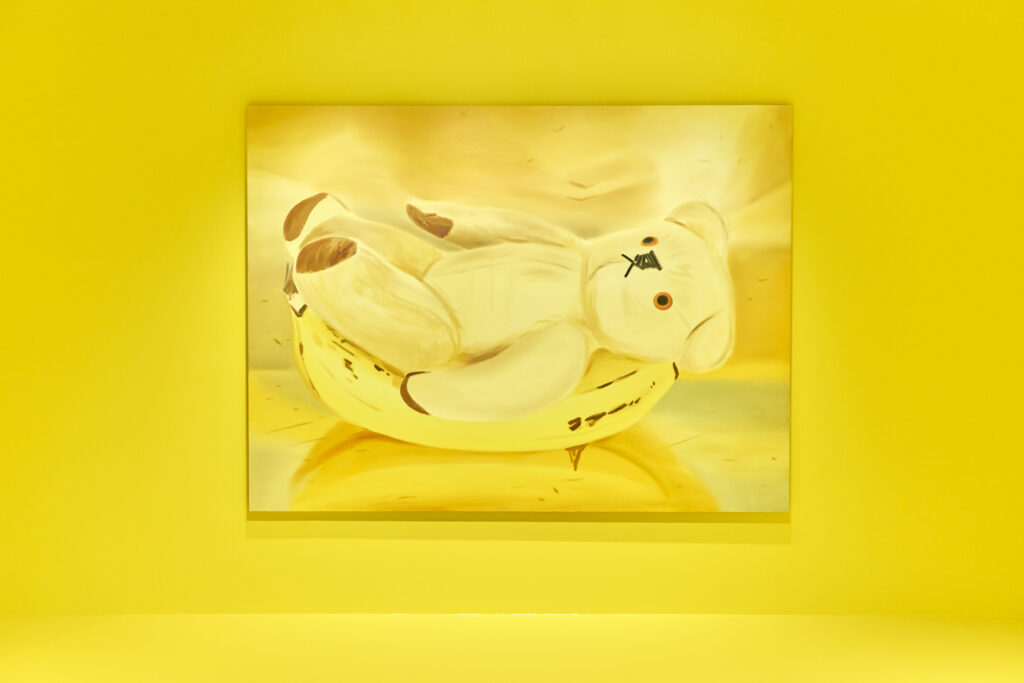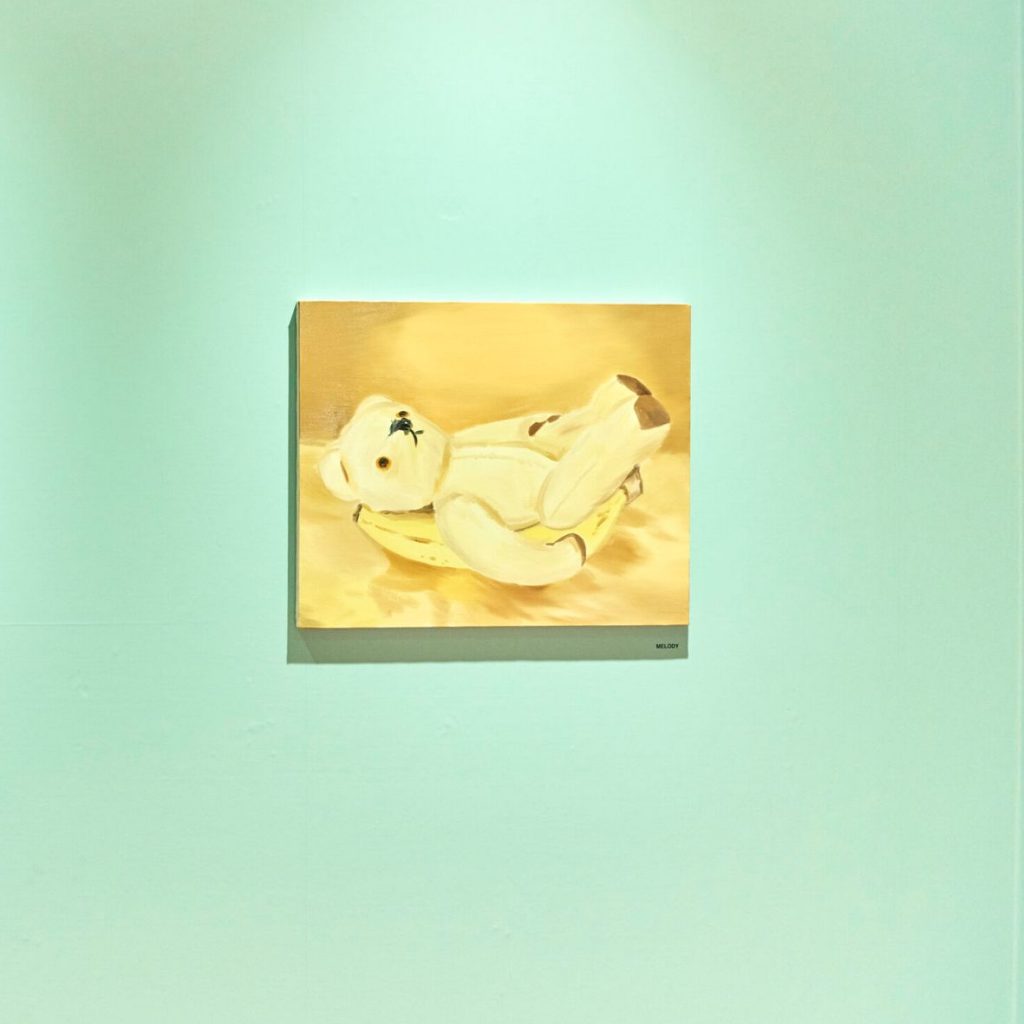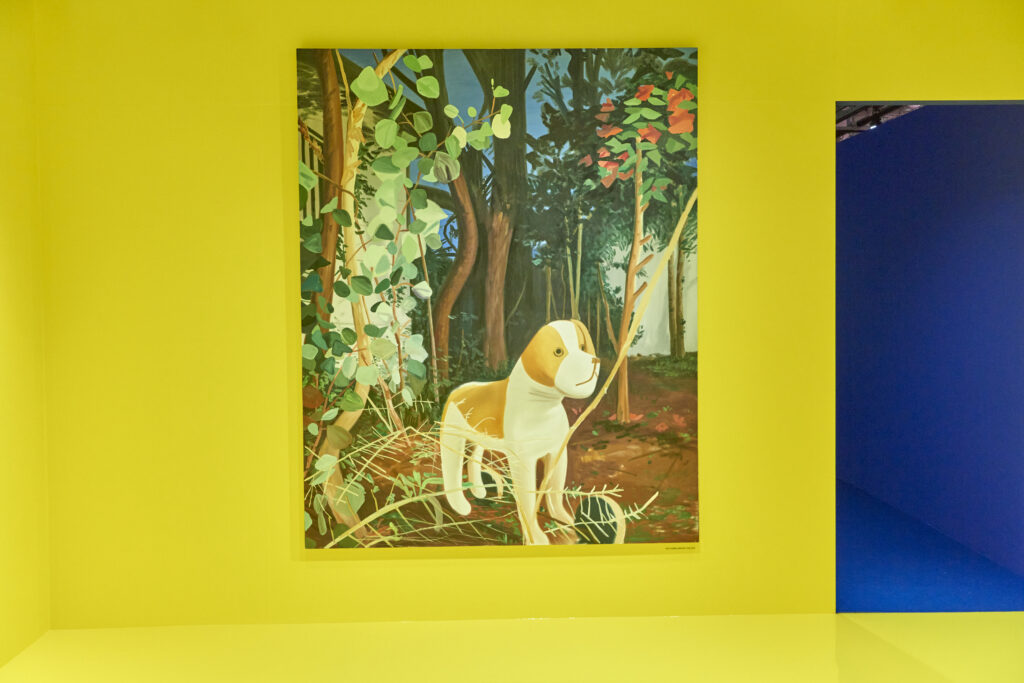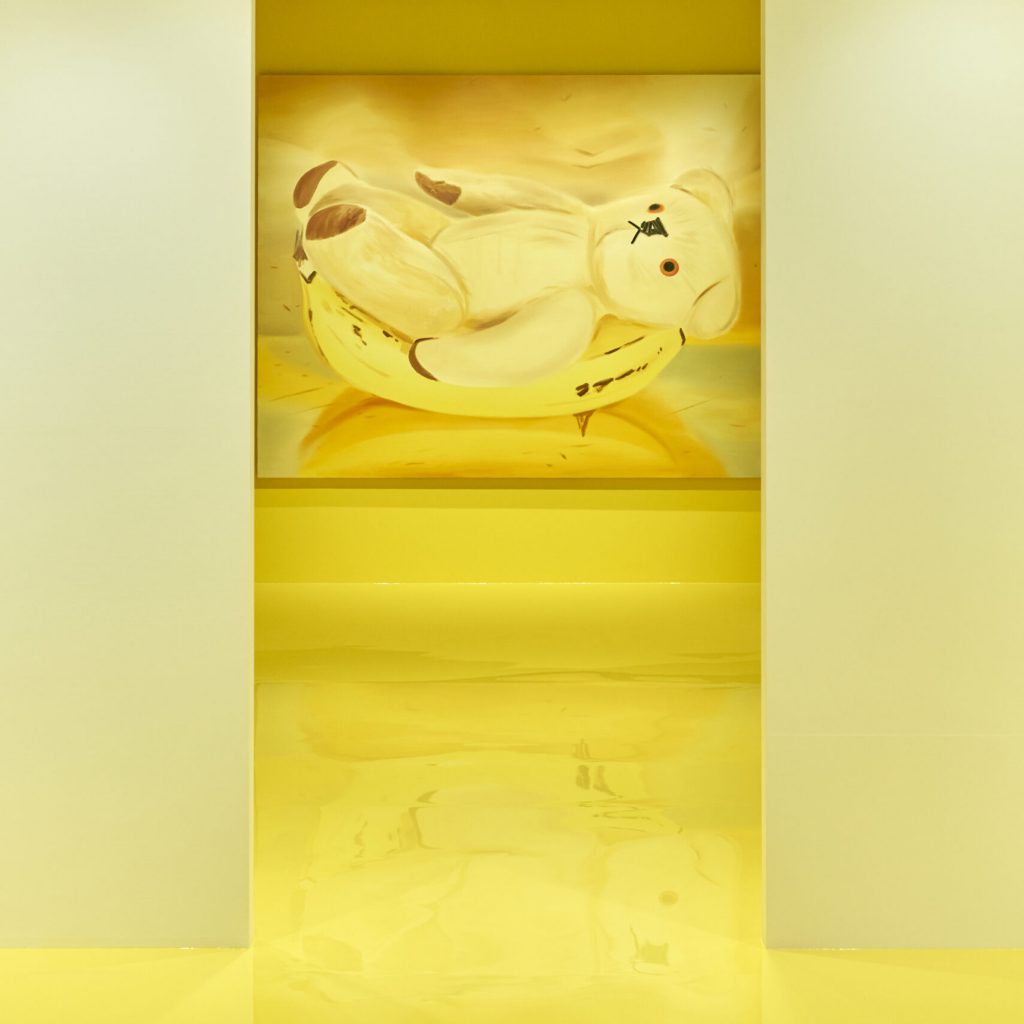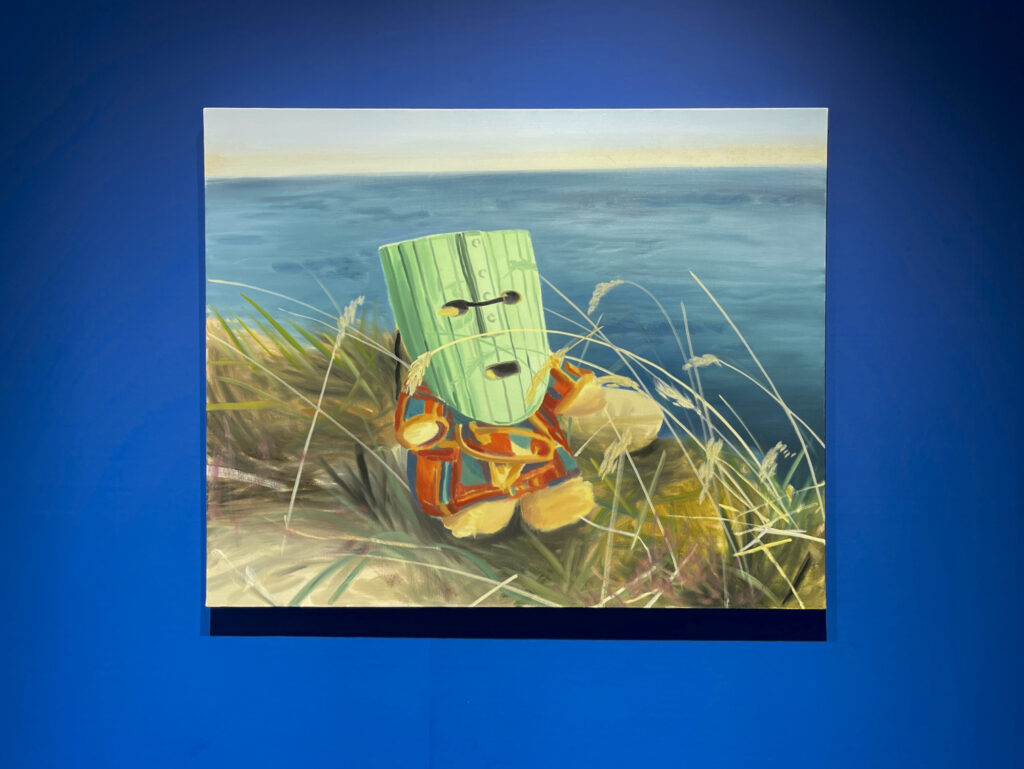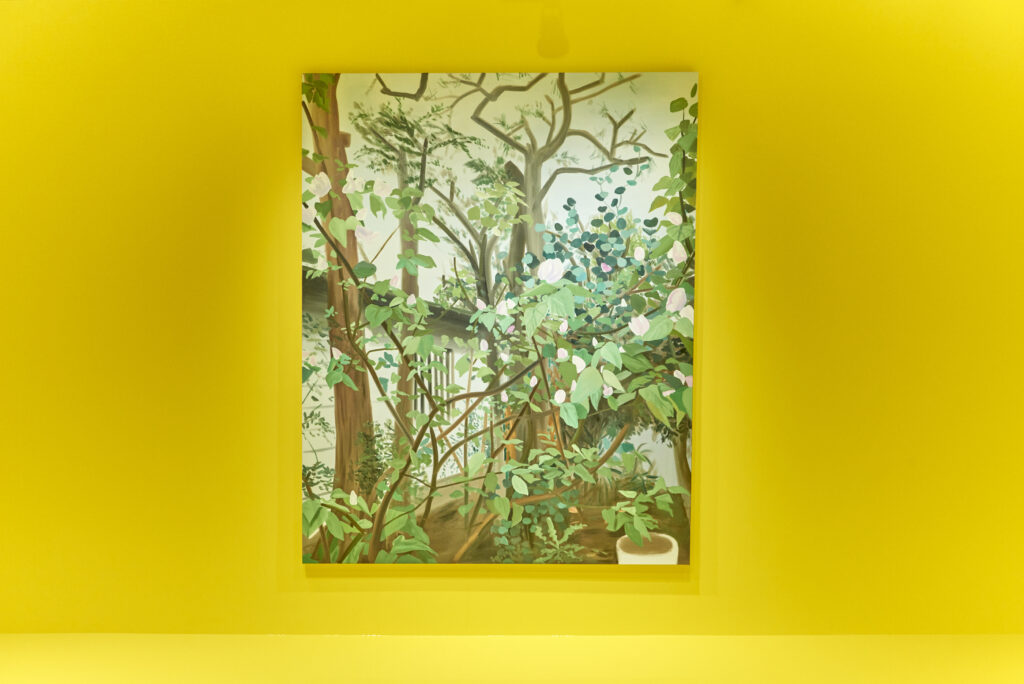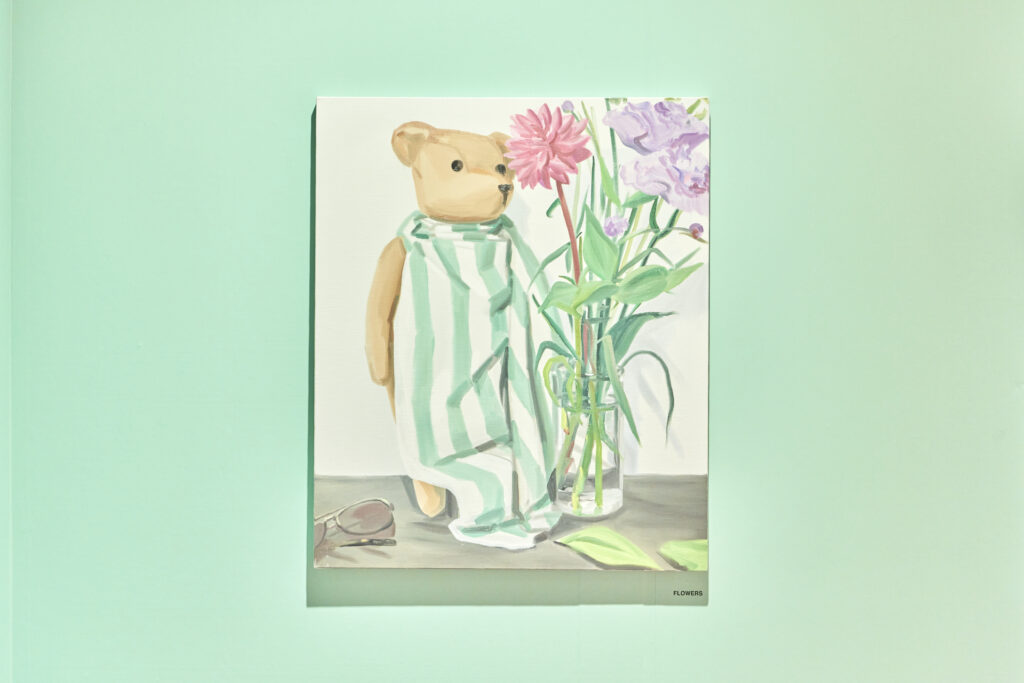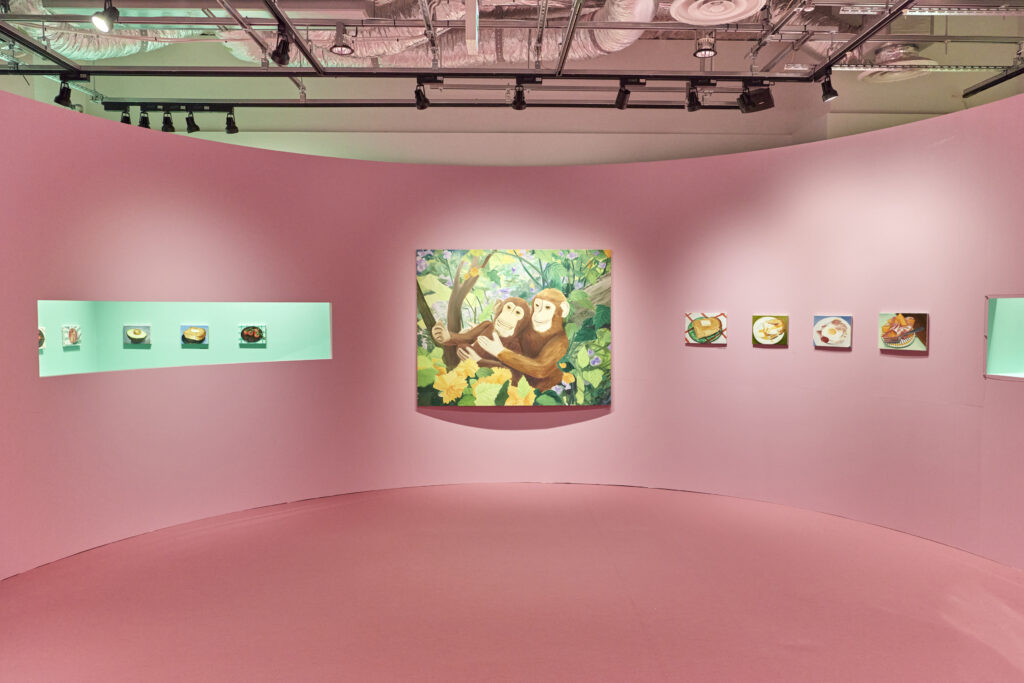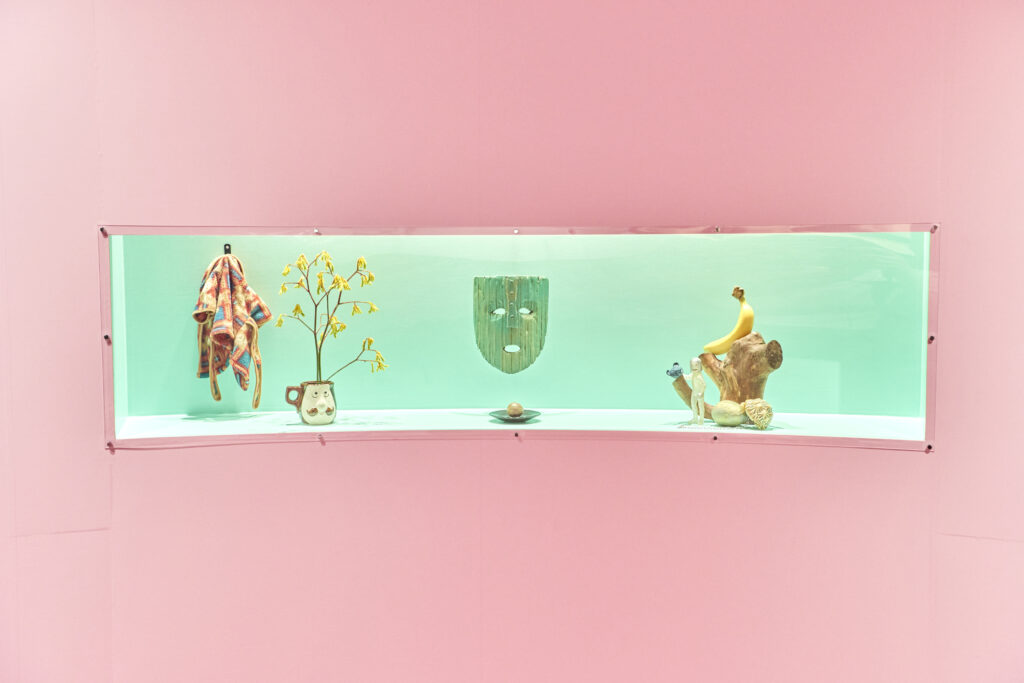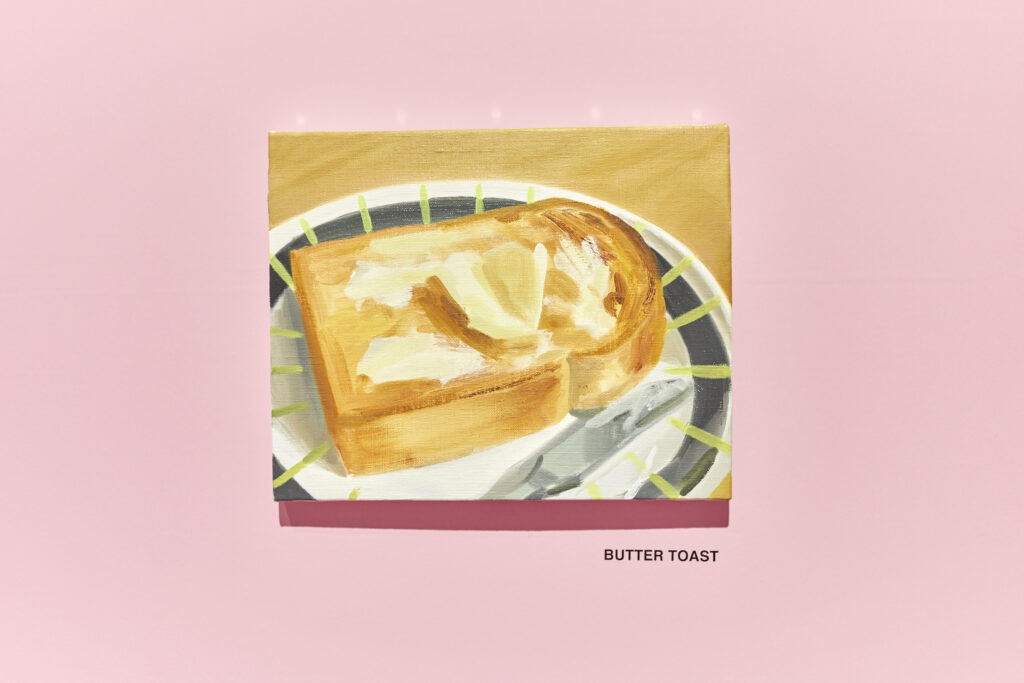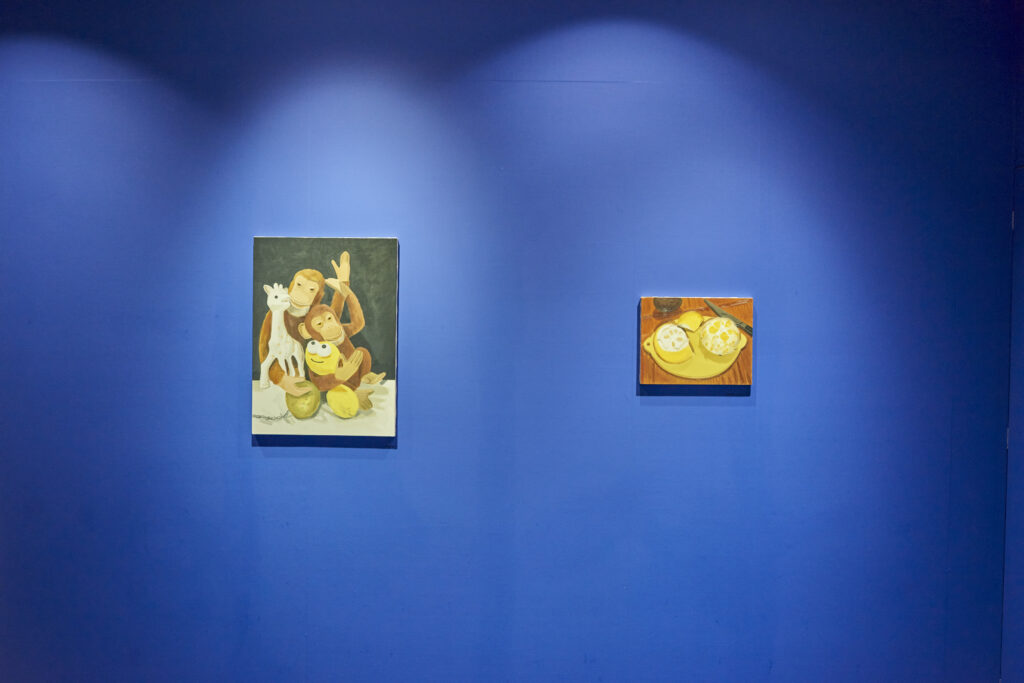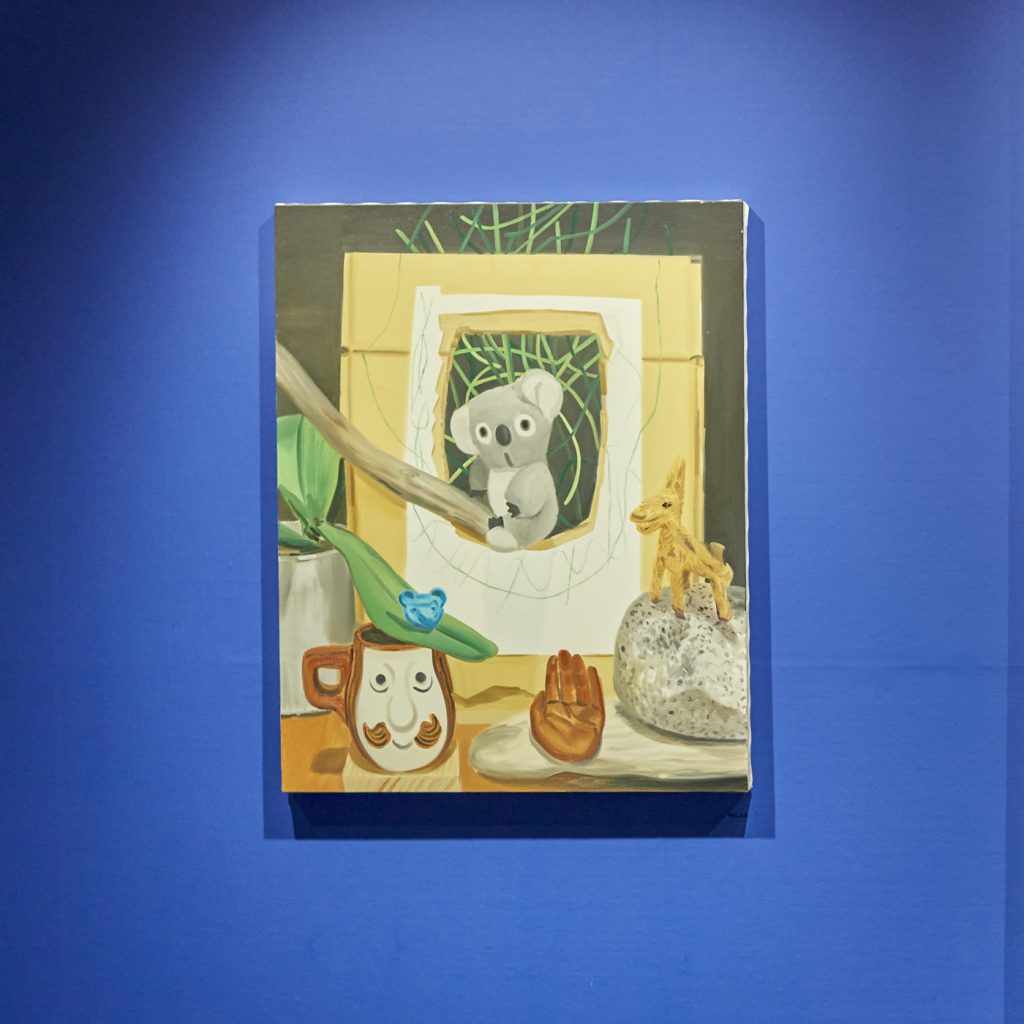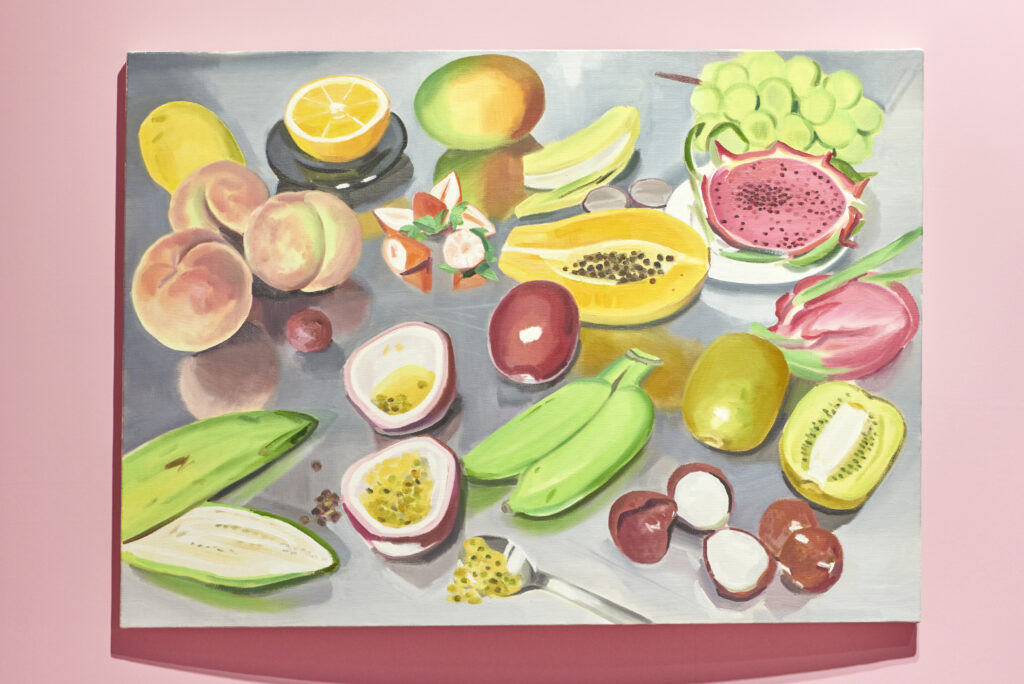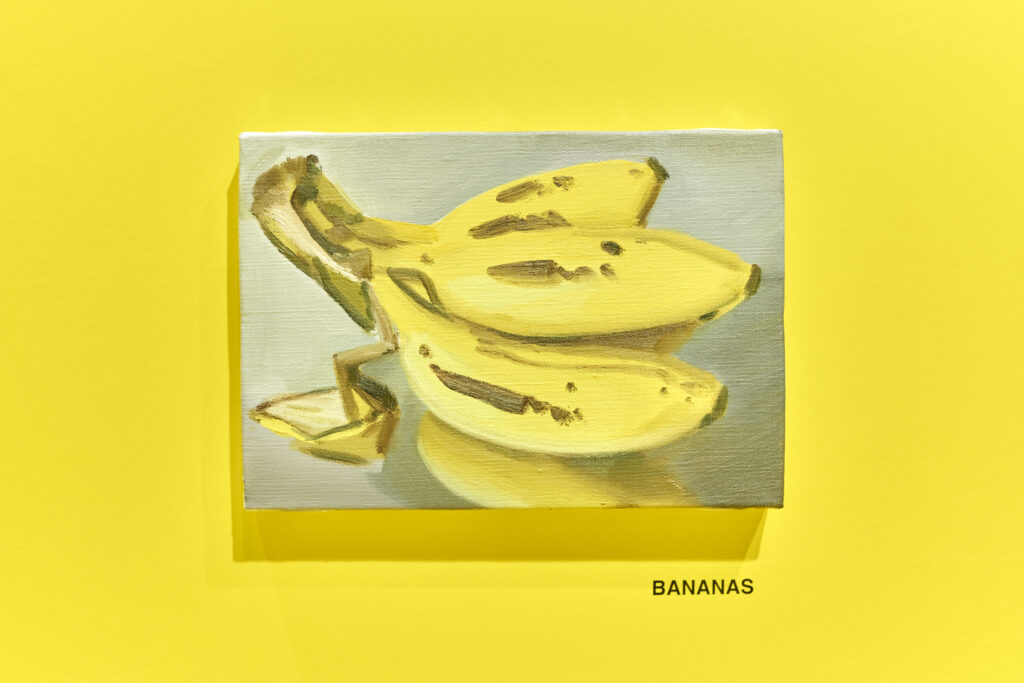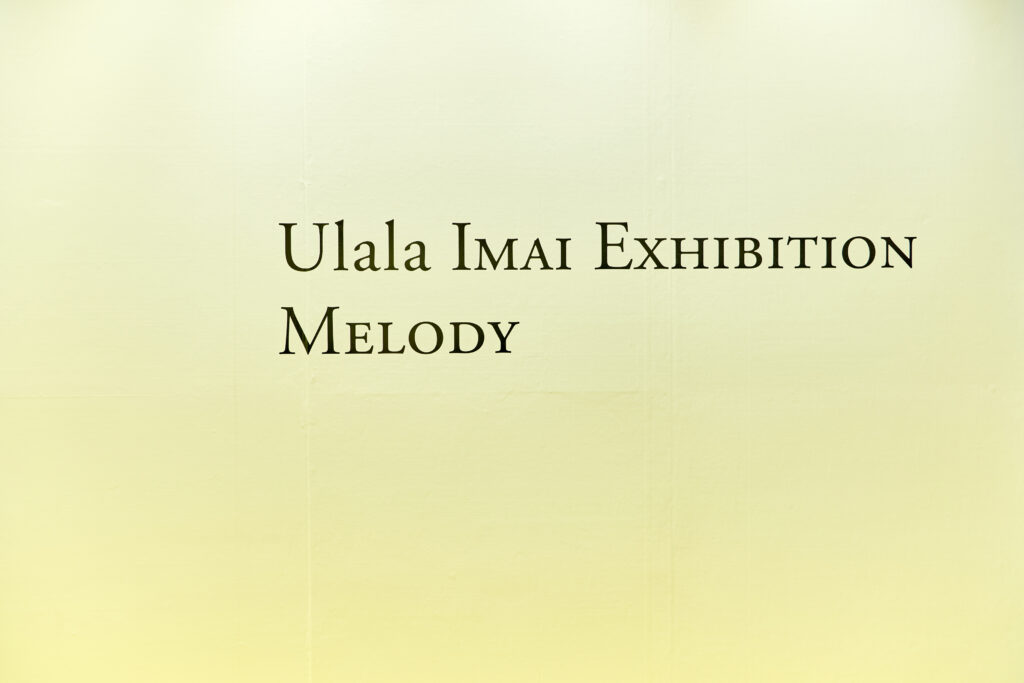Ulala Imai is a painter who attracts a great deal of attention. Commemorating the completion of her artbook “MELODY”, she held an exhibition “MELODY” consisting of her newest body of works at “Parco Museum Tokyo” in Shibuya Parco.
Though Imai had released a body of works reminiscent of “everyday life” and “light”, mainly depicting still lifes on dining table or toys that can only be drawn in her house, the corona pandemic brought about a change in her feeling about creations. This time, she talked mainly about the change in her mind and her work “MELODY”, which had become her turning point in her creative practice, at her solo exhibition venue.
——First of all, please tell us how you decided to publish her artbook “MELODY” this time.
Ulala Imai (hereinafter, Imai): When I held an exhibition “MARCH” at the gallery OIL by Bijutsu Techo from the end of February to March last year, Ms. Sugita (Junko), who was in charge of editing this artbook “MELODY”, came to see it. At that time, she said, “Would you like to publish an artbook?” However, I just published my first art book “gathering” from baci in 2018, and I was just burned out and exhausted, so I wasn’t really enthusiastic about it. However, Ms. Sugita said, “I will support you so that it will not be a burden on your production. And let’s shoot the works such as “project N78 “and OIL on display at Opera City Art gallery as well.” Then, I decided to do it. The artbook project started with a team of four people, Ms. Sugita, Mr. Sakaguchi, the editor-in-chief of Parco Publishing Co., Ltd., and Mr.Tada, a cameraman. It was fun working with the cheerful team.
Due to the state of emergency that had been proclaimed immediately after that, I was worried that the project may fall through. But that didn’t happened. Rather, I could work on it without hurrying.
——According to the statement of the exhibition, you have come to want to draw motif in an enlarged size, after working on the work “MELODY” that appears on the cover of the book, right? How did the production of “MELODY” become a turning point for you?
Imai: I thought it would be interesting to see a bear on a banana, so at first I drew “MELODY” in a small size (33.3 x 45.5 cm). That was exhibited at the nidi gallery in Ebisu.
At that time, I was about to exhibit my works at the Nonaka-Hill Gallery in Los Angeles. Until then, I had never drawn a large-scale work with motifs drawn in an enlarged size, apart from a large-scale painting with life-sized motifs. So I drew “MELODY” in a large size (97 x 145.5 cm), because I wanted to try one. After working on it, I came to a realization that drawing something in a larger size was really fun. Since then, I have started to draw large-sized paintings. So I would say “MELODY” acted as a trigger for my willingness for working on big paintings.
—— That’s why you put “MELODY” on the cover of the artbook, right?
Imai: I had been thinking of making an eye-catching one, if I have any chance to make an artbook. So I used this “MELODY” for the cover.
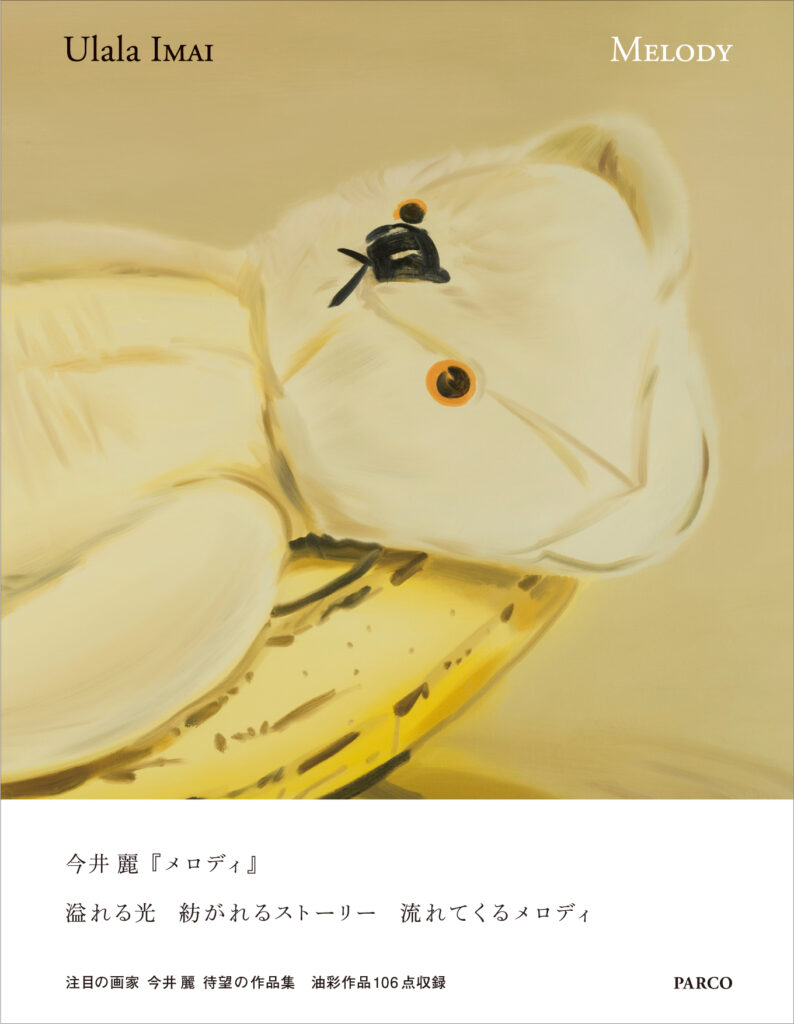
I have drawn “MELODY” with the same motifs several times, and the one on the cover depicts a banana floating on the water. At first, I was thinking of drawing a banana placed on a stainless steel, but when I was drawing, the drama “Aishiteru to Itte Kure ” (Tell Me That You Love Me) was being rebroadcasted. In the opening of the drama, there was a scene in which Etsushi Toyokawa and Takako Tokiwa, who starred in the drama, emerged from the golden water surface with bare torsos, which I thought was very interesting. So this is the work I drew with that image in my mind.
——I heard that this image was reflected in this exhibition as well.
Imai: There were several color-coded rooms, and that image was reflected in the first yellow room. When I talked about this episode, HYOTA, who directed the exhibition, liked it and said, “Let’s make the exhibition room where the visitors will feel as if exhibited items are floating on the surface of the water.” So that’s why only that room has a glossy floor.
The way the world looks has changed after the STAY HOME period
——In the statement you said, “I think my work has changed greatly in the last year and a few months.” What kind of changes have you experienced?
Imai: When the world faced coronavirus catastrophe, I was drawing what was inside the house during the STAY HOME period. After a while, I became able to go out a little, and the insignificant scenery looked very fresh and beautiful, and the way the world looked changed a little. Until then, I had not drawn much landscape paintings, but I started drawing gardens and landscapes little by little, and now I’m very much into landscape paintings.
——You mentioned in a previous interview that you don’t draw much landscape.
Imai: That’s right. My dad (Shingo Imai) is a Western-style painter, but since I was a kid, when my dad drew sketches during our family trips, we had to wait for a long time until he finishes it. It may have been trauma. At that time, I was like, “How boring landscape paintings are!” Even in the museum, I used to go past the landscape painting section even without having a glance at exhibits.
——Last year, you held many solo exhibitions, and you are energetically active even under the coronavirus pandemic. Did this situation affect your motivation for creation?
Imai: The encounters with the Nonaka-Hill gallery was significant for me. Until then I had not drawn a certain kind of paintings that I thought was too eccentric, but they kindly said “Draw what you want to draw just as much as you want.” That word made me feel better. Right now, I don’t hesitate to draw what I really want to draw, which is a lot of fun.
I like to draw such a quiet brightness like the moment I left home on a sunny morning in a cold winter
——I think that “everyday life” and “light” should be the keywords to describe your works. Are you aware of that?
Imai: I have three children, and I spend a lot of time at home, so I decided to change my mind and started making works that can only be done inside the house. Then I was trying to find the motif in the house, so that’s why my works is reminiscent of “everyday life”.
In terms of “light”, I’ve been talking about this episode in many places, but one day I got a lot of white asparaguses. When I drew the white asparaguses placed on the stainless steel, it suddenly looked like a fluorescent lamp that was emitting light. So I realized that my painting looks bright and glows naturally. It makes me feel brighter as well. So I am trying to draw something that seems to emit light somewhere in the picture as an accent.
I don’t like flashy brightness, but I like to draw such quiet brightness, like the moment I leave home on a sunny, cold winter morning.
——I also find the composition of your painting interesting, but what do you think about that?
Imai: I’m very particular about the composition. I can’t draw without concrete motifs. If I’m told to draw anything freely on a white canvas, I can’t draw anything. When I find something I like, I shoot it from various angles with my smartphone, and when I can shoot it with the best composition, I print the photo out and draw it without drafting.
If I wonder how I draw something when I am drawing, I will fail. So I have to think about the composition perfectly beforehand to the extent that I can think the only thing I need to do is just to draw it. And I try to draw on the canvas at once without much rest. Therefore, the person who sees my painting may feel comfortable and relaxed.
I want to be a long-loved painter
——The artbook contains 106 works. It is said that the ones drawn in 2020 are the main ones, but did you make more works in 2020 than usual?
Imai: In 2020, there were nearly 10 exhibitions in Japan and overseas, but I’m busy this year as well. I’m busy every year, but I’m getting busier. Recently, I have a lot of big work. Multiple productions are also in progress at the same time.
After the first declaration of the state of emergency, I was thinking that I might have to give up my career. But everyone was staying at home for a longer time than before, and it seemed that people were trying to make the house cozy. The number of people who want to decorate the house with my paintings has maybe increased because the paintings try to remind us to enjoy the fleeting moments of domestic life.
——How long does it take to draw a painting in usual?
Imai: It took two days to draw the large size (194 x 259 cm) “MELODY” in the first room of the exhibition hall. Also, this large size (259 x 194 cm) work “MASQUERADE” takes about two weeks.
I can draw ones with less colors quickly. But in terms of the ones with strong contrast, I have to dry them once. However, if I draw something slowly and delicately, it tends to fail. On the contrary, drawing it all at once keeps the same atmosphere, so it works well.
——Have you ever been fed up with drawing?
Imai: I draw pictures every day. There are many things I’m not good at other than drawing, and the only thing I’m not afraid of doing is painting. So no matter how busy I am, I never wanted to quit it. I decided to live with this when I was little. I’m happy because I can live out of what I can only do.
——Your Twitter profile says, “I can only draw oil paintings,” but are you not thinking of trying other creations such as animation?
Imai: Many people ask me, “Why don’t you draw a picture on the wall?” Or “Why don’t you try printing?”, But I know that it will definitely fail, and it will not be better than oil painting. So I only focus on oil painting.
——Finally, please tell us the reason why you asked Kaoru Kasai to design your book.
Imai: My father took me to the Museum of Western Art overseas when I was a kid and I was impressed and attracted by classic covers of artbooks at the museum shop. So, I wanted to make an artbook that is like the ones sold in such a place. When I looked at the book that contains a selection of the advertisements directed by Mr. Kasai, his work seemed moderate, natural and gentle, which was close to the ideal image I had had. So I told Mr. Kasai the image I mentioned earlier and asked him to design my book. I really like the result, and I’m glad that I could work with him.
I want to be a painter who is loved by a wide range of generations for a long time, rather being a focal figure during a short period. So, like the “MELODY” that I mentioned before, I draw each motif over and over again, changing it little by little. I hope such works will be recognized and appreciated for a long time.
Ulala Imai
Ulala Imai is painter born in Kanagawa prefecture in 1982. She graduated from Tama Art University, Faculty of Fine Arts, Department of Painting, Specialty of Oil Painting in 2004. She won the Shell Art Award Kunio Motoe Jury Encouragement Award in 2012. Major solo exhibitions include “LOVERS” (xyz collective, Tokyo, 2019), “project N78 Rei Imai” (Tokyo Opera City Art Gallery, Tokyo, 2020), “LOVERS” (Union Pacific, London, 2020), “MARCH” (MARCH) OIL by Art Techo, Tokyo, 2020), “REVELATION” (nidi gallery), “AMAZING” (Shinjuku Takashimaya Art Gallery, Tokyo, 2020), “AMAZING” Nonaka-Hill, Los Angeles, 2020). Her artbooks include “Gathering” (baci).
https://ulalaimai.jimdofree.com
Twitter:@ulalaimai
Instagram:@ulalaima

■ Ulala Imai’s work collection “MELODY”
Author: Ulala Imai
Book design: Kaoru Kasai
Publishing: PARCO Publishing
Specifications: A4, Paperback 168p
Main unit price: 3,300 yen + tax
https://publishing.parco.jp/books/detail/?id=398
Photography Yohei Kichiraku
Translation Shinichiro Sato

